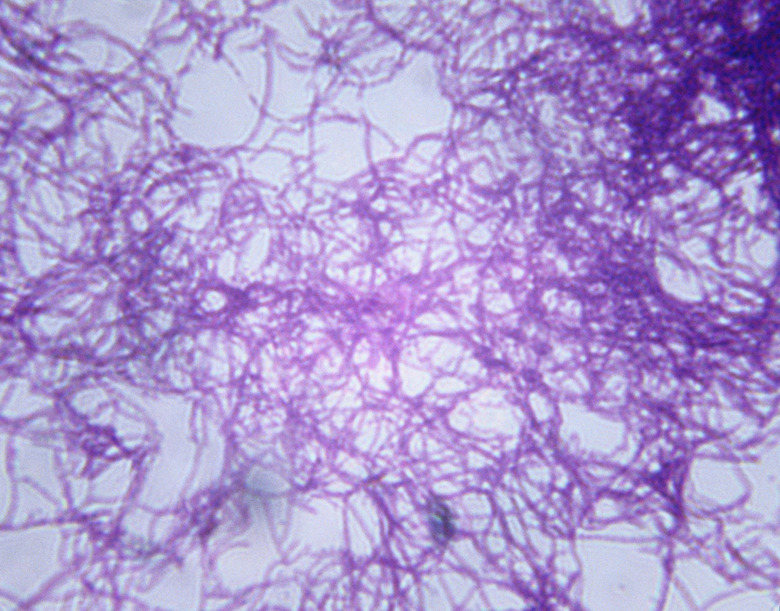What Is Ubiquity In Microbiology?
Humans fill the Earth with a population of over 7 billion individuals around the world. However, the amount of humans come nowhere close to the ubiquitous nature of microorganisms.
Microorganisms are ubiquitous. Microbiologists have located them almost everywhere on the planet. Roundworms, for example, are more abundant animals, native even to Antarctica. Considering the ubiquity of microorganisms, finding microorganisms is not hard except for the fact that they can only be seen under microscopes.
Bacteria, fungi and other single-celled organisms have been discovered in ordinary areas (like the bathroom in your house, for example) as well as in extreme locations (like hydrothermal vents deep in the ocean).
How to Define Ubiquity in Microbiology
How to Define Ubiquity in Microbiology
Ubiquity means something that appears literally everywhere. It's hard to imagine the scope of the ubiquity of microorganisms especially since we cannot see them.
But every imaginable surface in the world is covered in microorganisms. The table next to you, your shoes, your phone and even your skin are all covered by communities of microorganisms.
Try a ubiquity lab in your class (or on your own!) to demonstrate this idea. Take swabs of various surfaces and transfer them onto agar growth plates. Store them in the lab and check back in a couple days.
You'll see hundreds of colonies of bacteria, fungi and other microorganisms growing on every plate no matter where the swab was taken from.
Look Inside Yourself
Look Inside Yourself
Bacteria are extremely common microorganisms. Although they are known for causing serious diseases like pneumonia, meningitis and toxic shock syndrome, only 3 percent of bacteria are actively harmful to people or animals.
The human body itself has about 100 trillion bacteria with most living on the skin and inside the digestive system. Harmless bacteria on the skin protect themselves from other microbes by releasing toxic proteins.
This not only keeps the bacteria safe, but it also prevents dangerous microbes from entering the human system. In the intestines, bacteria aid in digestion, access nutrients and hinder the growth of harmful bacteria.
The Newbies
The Newbies
In the late 1970s, scientists discovered that microorganisms once considered bacteria were actually a different life form: archaea. These organisms live in severe conditions where bacteria and animals are not found. For example, ocean-dwelling archaea live near vents where temperatures exceed 212 degrees Fahrenheit, which is the boiling point of water.
Some live in hot springs, such as those found in Yellowstone National Park. Others survive deep in the Earth within oil deposits. Above ground, archaea live in the digestive systems of cows, where they produce methane.
Solid as a Rock
Solid as a Rock
To provide more evidence of ubiquity, some microorganisms — endoliths — are inside rocks or between grains of minerals. These bacteria, fungi, or archaea are found both above and below the Earth's surface. Because of their unique homes, some endoliths are autotrophs, making their own food from surrounding matter.
One common endolith is a type of Antarctic lichen that grows inside sandstone. Deep-biosphere endoliths live miles below the ocean floor where temperature and pressure are severe and light and air are absent.
Blast from the Past
Blast from the Past
Not only are microorganisms in unique locations, they can also be found in the past. During the 1990s, bacterial spores were discovered inside the digestive system of bees trapped in amber, which is fossilized tree resin. The samples date back 30 million years.
Researchers at California Polytechnic State University attempted to revive the bacteria and, over several years, repeated test after test to show the ancient bacteria were functioning again. However, some scientists questioned whether the samples became contaminated with modern-day bacteria.
References
- United States Census Bureau: U.S. and World Population Clock
- Society of Nematologists: Information on Nematology
- Australian Antarctic Data Centre: Antarctic Taxa
- Dallas County Community College District: The Ubiquity of Bacteria
- CDC: Disease Listing
- UC Museum of Paleontology: UC Berkeley: Introduction to the Archaea
- Carleton College: Science Education Resource Center: Endoliths
Cite This Article
MLA
Sherwood, Susan. "What Is Ubiquity In Microbiology?" sciencing.com, https://www.sciencing.com/ubiquity-microbiology-20973/. 19 June 2019.
APA
Sherwood, Susan. (2019, June 19). What Is Ubiquity In Microbiology?. sciencing.com. Retrieved from https://www.sciencing.com/ubiquity-microbiology-20973/
Chicago
Sherwood, Susan. What Is Ubiquity In Microbiology? last modified March 24, 2022. https://www.sciencing.com/ubiquity-microbiology-20973/
